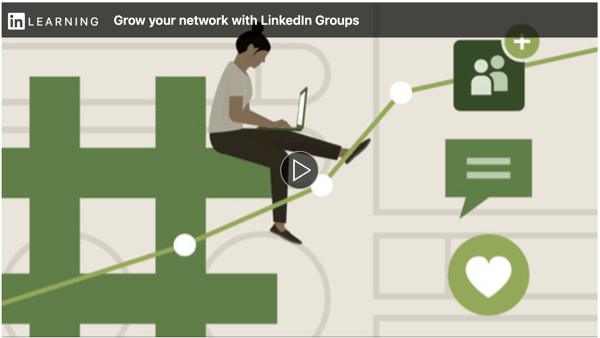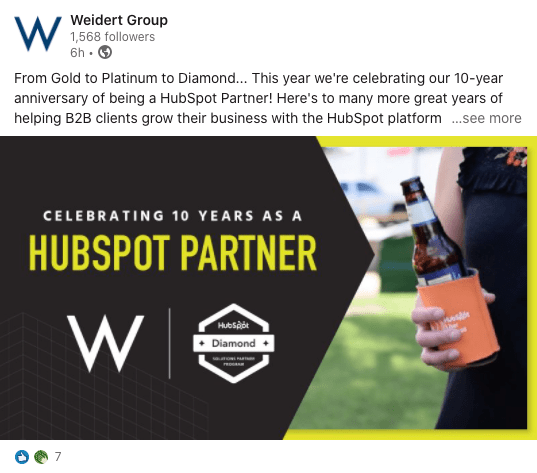10 Top Ways to Get More Connections on LinkedIn and Grow Your Network
The expansion of remote working and the growing importance of social networking for social selling has many professionals exploring how to gain more connections on LinkedIn, and whether they’re doing everything they can to enhance their presence.
Now topping 756 million users in more than 200 countries, LinkedIn is the clear leader for connecting with B2B prospects, potential hires, and business partners.
Even so, LinkedIn can be intimidating. New users need to ask not only whom they should connect with, but whom they shouldn’t connect with. At the same time, that hesitation can slow your progress toward building new connections and expanding your professional network.
You’d think out of 756 million users, it wouldn’t be difficult to connect with 500+ people and become a super connector. But after you’ve exhausted your own contacts list, it can be tough to know if you’re using the most effective methods of reaching out.
So, how can you expand your professional network on LinkedIn and make sure all those new contacts are relevant to your business goals? These 10 tips can help you grow your network and get results that support your professional success:
1. Personalize your LinkedIn connection requests
It’s important to understand how to connect with someone on LinkedIn in a way that puts them at ease. When scrolling through LinkedIn’s list of “people you may know,” don’t simply click the “connect” button and fire off a generic request.
Instead, click into the individual’s profile page and click the “connect” button there. That will bring up the box shown below and allow you to add a personal note with your connection request, like “Good to meet you last week in Chicago. Let’s keep in touch.”
If you’re interested in connecting with someone you don’t know, such as a person who works in a similar role at another company, add relevance by letting them know why you’re messaging them. You might say, “I’ve seen your posts and noticed some of your work. I really appreciate your perspectives and would love to connect.”

2. Follow up on in-person networking opportunities
Believe it or not, building your network can (and does) still happen the good, old-fashioned way when you meet and interact with people face to face. Actually, as we navigate back toward a world of doing at least some business in person, opportunities to connect with people are on the rise once again. Be sure to make the most of them.
Maybe you met someone at a trade show or conference? Volunteer or serve on a committee for a charity event? What about the business owner at your favorite coffee shop, your healthcare provider, yoga instructor, classmates… you get the idea. It’s easy to overlook connections you come in contact with every day, so reach out. You may be surprised at what you learn about them in the context of LinkedIn.
RELATED: Get Our Complete Guide to Social Media for Complex B2B Industries
3. Break growth goals down into achievable chunks
Getting from 100 connections to 500+ can seem like an impossible feat. But if you divide that number over many weeks or months, it won’t seem so insurmountable. For example, instead of setting a goal of going from 100 connections to 500+, try setting your goal to 175 connections within two weeks; then repeat.
Remember, the key to setting goals is to make them realistic and time-bound.
And don’t forget to exercise caution about how to grow connections on LinkedIn. No matter your goals, it’s vital to maintain proper etiquette and refrain from spamming people you don’t know. Quality matters more than quantity, and spamming connections might not get you either.
Don’t expect all your connection requests to accept your invitations. They may have a personal LinkedIn philosophy of assessing potential quality of connections and deciding whether to accept requests. Here are a few questions I ask myself when I receive a request:
- Do I know you or someone who knows you?
- Am I familiar with your company?
- Do you share industry insights I care about?
- Are you in a geographic market where I do business?
If I can’t answer “yes” to at least one — and preferably more — of these questions, chances are I won’t accept your invitation to connect.
4. Explore LinkedIn Groups
LinkedIn Groups offer topic-specific spaces where you can connect within your industry or specialty to build relationships, share information and expertise, and probe communities for advice. You can select groups that reflect communities within your target audiences, both to demonstrate your knowledge and to learn more about prospects and customers. To learn more about finding a relevant Group, LinkedIn Learning has this short video:

Groups are created and moderated by their own leaders and gatekeepers and have their own sets of rules, so be sure to review rules and expectations before requesting to join.
5. Invite engagement by posting often
This tip is self-explanatory. When a connection likes, shares, or comments on your status update, their connections are more likely to see your original post in their feed. If your content seems relevant, those “2nd-degree” connections may take the step to reach out and send an invitation to connect with you.
Posting more often creates additional opportunities for engagement, thus syndicating your content across home page feeds everywhere. Don’t be too concerned about annoying people by posting every day. LinkedIn’s algorithms are tricky, and your network isn’t likely to see every post — unless you publish an article natively using LinkedIn’s article tool (more on that later), which does notify your network.
6. Grab attention with visual content
I’m not just talking about your profile picture and banner image. Posts with images get twice as many views — and research suggests that posts with video content are re-shared 20 times more.
Adding images to your social posts increases engagements with people in your existing network, and boosts exposure to potential connections. So mix it up. Don’t always just share links; include visuals.

7. Engage with existing connections
Engaging with current connections puts your profile directly in front of their networks, and all it takes is a “like” or comment on their posts. A simple “Great thoughts” or “Thanks for sharing” can help expand your reach and, quite honestly, it’s the considerate thing to do when someone’s thoughts or content resonate with you.
Commenting with your personal insights or questions can increase engagement and exposure even more. And engagement adds depth and meaning, helping transform connections into relationships.
ALSO READ: Using LinkedIn Career Pages in Your Company Recruitment Marketing
8. Promote your LinkedIn profile URL
Social media platforms such as Twitter and Instagram typically give you space for a bio. Use those bio spaces as a LinkedIn connection-driving machine by encouraging contacts there to find you and connect on LinkedIn, too — especially if you have a significant following on the other platform.
Don’t be afraid to promote your LinkedIn profile by posting the link in a status update, tweet, pin, video, photo, etc. This is another great way to take advantage of your presence on other social platforms. Just be sure to claim your vanity url so it’s easy to remember and includes important identity information or keywords.
While it’s not a social channel, don’t forget the simplicity and outright importance of adding your LinkedIn profile link to your email signature, like this:

9. Leverage Keywords in Your Profile
Similar to optimizing your website or copy for SEO, LinkedIn gives you the opportunity to attract profile visitors based on the words you choose, so every word counts. Use common variations of your job title and duties to ensure that semantics don’t make you invisible.
For example, is your job title Content Manager? You likely have many roles including copywriter, website editor, creative writer, communications specialist, blogger, and more. Someone may be more likely to search connections who perform specific functions rather than search by their formal titles. Give your role some thought and break out the different functions to appeal to different possible target audiences.
10. Write and publish articles
It’s common practice to share blog posts your company and others have written that you feel will resonate with your audience by posting an update on LinkedIn and sharing the URL. When those insights are your own, it’s even more important to put them out in front of people. Publishing articles as native content (also known as long-form posts) on your LinkedIn profile is one of the best ways to establish your personal brand and share your expertise in a given industry.
The great thing about native content is that your network is notified every time you publish an article, increasing your chances of engagement and brand exposure. This also points to the importance of not publishing articles every day, or your followers may start to tune out. While a simple call-to-action to get in touch or check out additional resources is usually acceptable at the end of the article, nothing will turn off readers faster than an article that ends up being nothing more than click bait or a sales pitch. So only write on topics that truly provide value to readers.

Getting to 500+ LinkedIn connections won’t happen overnight, and if you already have 500+ connections, don’t stop there. LinkedIn is the easiest and most powerful networking tool of our time, putting you one quick click away from meeting nearly anyone — all without leaving your couch.
Following these tips should make growing your LinkedIn network less intimidating, more realistic, more productive over time, and ultimately much more fun. And if you’re looking for an even more detailed source of tips on professional networking and engaging with prospects and customers through social media, you won’t want to miss our tip sheet, Maximize Your Manufacturing Sales LinkedIn Profile. Just click the link below to get your copy!
















![Toni Kroos là ai? [ sự thật về tiểu sử đầy đủ Toni Kroos ]](https://evbn.org/wp-content/uploads/New-Project-6635-1671934592.jpg)


